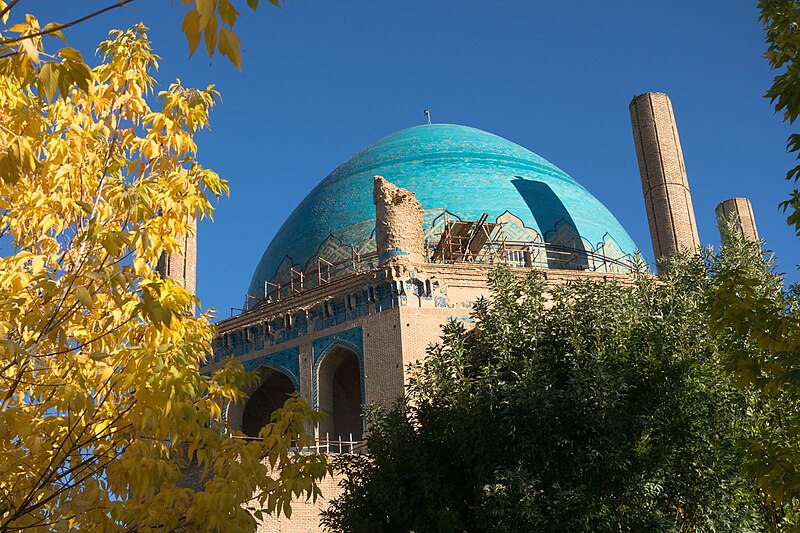
Sultanieh mosque
The Dome of Soltaniyeh in Soltaniyeh city, Zanjan Province, Iran, traditionally so called, is a complex of ruins centering on the Mausoleum of the Mongol ruler Il-khan Öljeitü, also known as Muhammad Khodabandeh. The estimated 200 ton dome stands 49 meters (161 ft) tall from its base, and is currently undergoing extensive renovation. Other names the Dome of Soltaniyeh is known by are the Oljeitu Dome, Dome of Sultaniyya, the Tomb of Oljeitu and Gonbad-e-sultaniyeh.
The main building, erected between 1302 and 1312 AD, may have the oldest double-shell dome in Iran, an idea about the construction put forth by scholar Marcel-Auguste Dieulafoy. It is one of the largest brick domes in the world, just at the theoretical engineering limit for a brick dome and the third largest dome in the world after the domes of Florence Cathedral and Hagia Sophia. Much of its exterior decoration has been lost, but the interior retains superb mosaics, faience, and murals. The Dome of Soltaniyeh paved the way for more daring Iranian-style cupola constructions in the Persianate world, such as the Mausoleum of Khoja Ahmed Yasavi and the Taj Mahal. Its importance in the Islamic world may be compared to that of Brunelleschi's cupola for Christian architecture.

